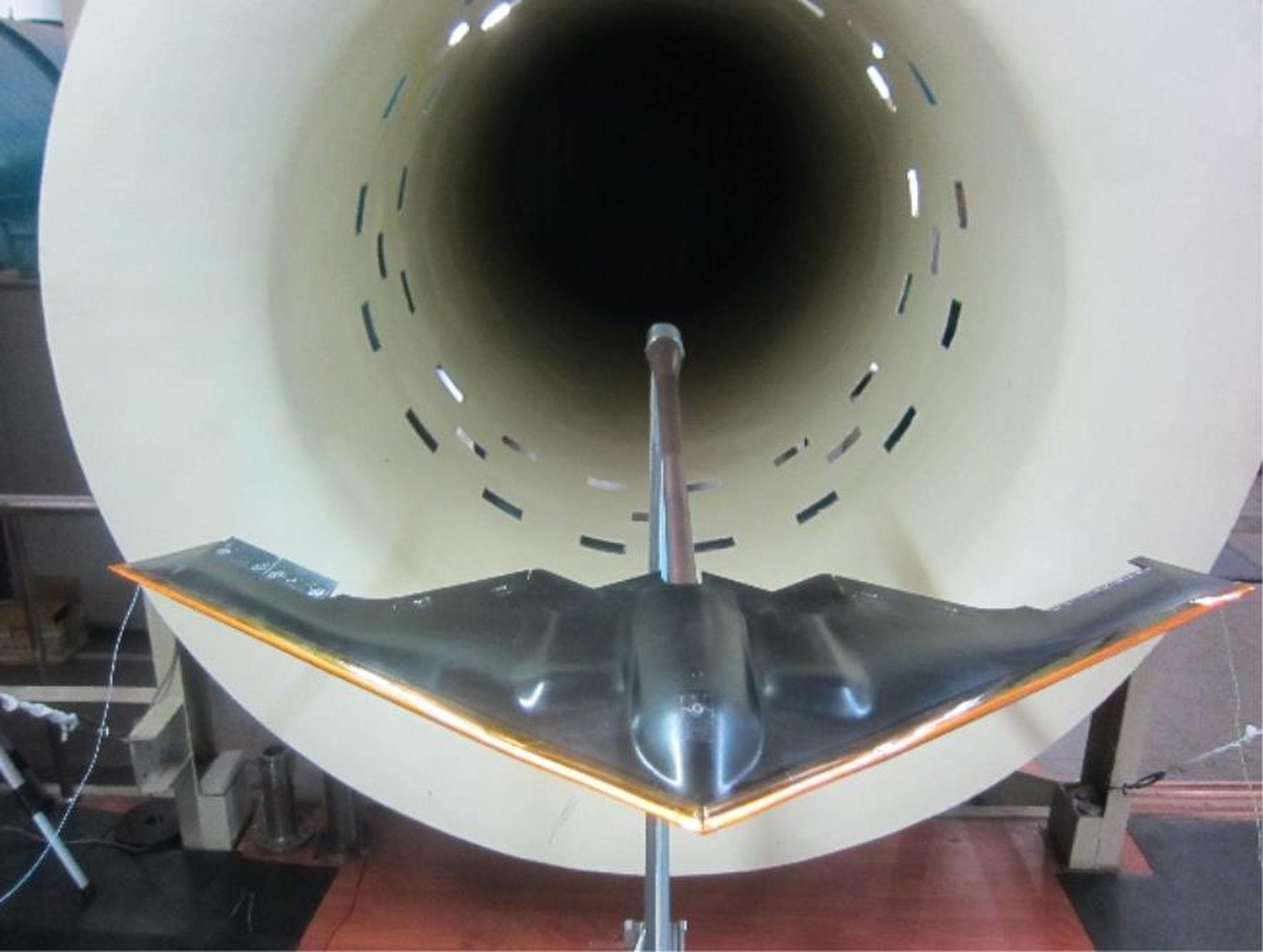Chinese researchers have developed a plasma device to prevent a stealth bomber from stalling by stimulating the airflow on top of its wings, as per a recent report by the South China Morning Post (SCMP).
A flying aircraft stalls when the airflow on top of its wings slows down, reducing the lift generated from below, which could even result in an aircraft crashing down.
For example, the American B-2 stealth bomber crashed in 2008 at Andersen Air Force Base in Guam because it stalled right after taking off from a runway.
A stealth bomber has a flat airframe without a tail to reduce its radar cross-section (RCS) area, but such a wing-body design also makes flight control more difficult, particularly at lower speeds.
Therefore, a team of researchers at the AVIC Aerodynamics Research Institute in Harbin, led by Niu Zhongguo, has developed a new plasma device which is a strip of the thin membrane covering the front section of a bomber plane.

This membrane is supposed to sense the decrease in airflow speed over the aircraft wing and then stimulate the airflow by charging the air molecules with high-voltage electricity, thereby restoring the lift coefficient of the aircraft by nearly a third.
Zhongguo and his colleagues published their findings in a paper in the Journal of Aerospace Power, a peer-reviewed publication run by the Chinese Society of Aeronautics and Astronautics, where they claim that the new device could prevent a stall, even if the aircraft drops to a plodding speed of around 108 kilometers per hour with a pitched-up nose.
“This is of great significance for applying plasma active flow control technology in aircraft,” said Zhongguo’s team in their paper.
The researchers note that some locally spinning turbulence could occur over the aircraft’s wings when it is flying at a relatively low speed with its nose pitched up. It can create a separation between the wing surface and moving airflow, which in physics is equivalent to the plane coming to a halt in perfectly still air.
In such a condition, the aircraft’s engines would still be functioning, but it would drop down like a stone. However, according to Zhongguo, the plasma device could reduce the spinning turbulence, bringing the moving air down to make direct contact with the wing surface.
Zhongguo and his colleagues tested their plasma device on a scale model subjected to a wind tunnel experiment. Their results suggest the technology worked as planned.
However, Zhongguo’s team noted that the device must be activated before the aircraft enters a stall. Predicting the occurrence of turbulence over aircraft wings is problematic because it could happen randomly at any time and anywhere on the wing surface.
Active Flight Control And Stealth
China is racing with other countries such as the US, UK, Germany, and Japan to bring the Active Flow Control (AFC) technology to aircraft, not just because of the improved aerodynamic performance that this technology can bring but also due to its potential to create the most-challenging-to-detect stealth aircraft.
China’s People’s Liberation Army (PLA) confirmed it was developing a stealth-heavy bomber last year.
Also, in July, Ge Heping, the Party chief of the AVIC Flight Test Center, announced plans to perform a test flight for an aircraft of “historic and strategic significance” later this year, fueling speculation that China’s first strategic stealth bomber, widely known as the H-20, could make its first flight soon, potentially even appearing in public for the first time.
Meanwhile, the US Defense Advanced Research Projects Agency (DARPA) also has a program to incorporate AFC technology into aircraft called the ‘Control of Revolutionary Aircraft with Novel Effectors’ (CRANE) program, which reports suggest would play an important role in the development of the US’ first 6th generation fighter.
All aircraft, including the currently operational stealth fighters and bombers, have movable flight control surfaces to manage the direction of airflow and pressure distribution over an aircraft to maneuver an airplane and control its orientation.
However, in the case of stealth fighters and bombers designed to evade radar detection, these control surfaces, which are hinged, could be a vulnerability, as they often reveal joints, seams, or gaps that can make it easier to detect the aircraft.
This is where the AFC technology comes in, as it could eliminate the need for flight control surfaces over the aircraft, thereby maintaining a constant aircraft shape throughout its entire flight.
Plasma devices, like the one developed by Zhongguo and his colleagues, represent one way of incorporating AFC in an aircraft. The movable flight control surfaces are usually located at the trailing edge of aircraft wings, tail, and even vertical stabilizers.
These control surfaces could be replaced with a plasma membrane or an array of electrodes that could quickly heat the air nearby to change its density and how it affects the aircraft’s flight.
Therefore, it is possible that China’s under-development H-20 Stealth Bomber could feature a plasma device for active flight control.
Another way of replacing flight control surfaces is by redirecting the air from aircraft engines and air blowers and blowing it through the trailing edge of the wing or an aircraft’s fuselage to change its flight trajectory.
This method has been applied to the MAGMA stealth drone developed by BAE Systems and the University of Manchester researchers.
Also, in September 2021, BAE systems were awarded a contract by the US Defense Advanced Research Projects Agency (DARPA) as part of the agency’s CRANE program to design a full-scale demonstrator aircraft that will have Active Flow Control at its core.
- Contact the author at tanmaykadam700@gmail.com
- Follow EurAsian Times on Google News